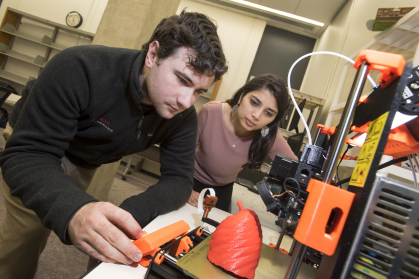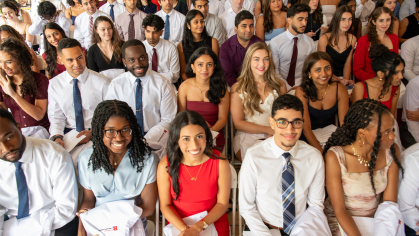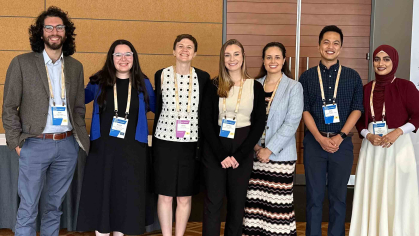Student Interest Group Strives for Tech Advances at NJMS

New Jersey Medical School (NJMS) student Jason Oettinger has an itch for innovation. With a background in various areas of engineering and a master’s degree in biomedical sciences, Oettinger is combining his knowledge of technology with his pursuit of a career as a practicing clinician.
Going forward, it will be students like Oettinger – part of the Technology-in-Medicine student interest group looking to keep the medical school on the forefront of the technological revolution – who will advance the field of medicine with important technological developments.
“Each year, medicine and technology become further intertwined, and understanding the pieces of that linkage gives the opportunity to make improvements,” said Oettinger, a member of the organization since he began his studies at NJMS. “I think that out of necessity much of our education treats these tools as black boxes, but if all medical students learned more about them, physicians would be more empowered to make our medical system better.”
The group prides itself on the innovative opportunities it provides to students. The centerpiece of those hands-on opportunities is a 3D printer, uniquely owned and operated by students, housed in the George F. Smith Library of the Health Sciences.
Students have enhanced their education by printing organ models so patients can better understand their conditions, and aid doctors by producing surgical guides that create an accurate model for a procedure.
“We’re certainly on the leading edge of the curve right now,” Oettinger said. “Having the 3D printer under the purview of students gives us the ability to set the rules and get our hands dirty when it comes to building, maintaining and really understanding all of this technology.”
In the midst of the COVID-19 pandemic, Technology-in-Medicine has been setting up production of 3D-printed face shields. The group has worked with the NJMS Student Covid-19 Team for distribution and is searching for other local groups in need of personal protective equipment (PPE).
Technology-in-Medicine, which recently doubled its printing capacity, will be making itself available for any opportunities to help once students return to campus.
With the help of the IT staff at NJMS, students have even been able to set up remote printing and webcam monitoring, giving them the opportunity to study the workings of the printer while they are using it.

“If we can provide some technical assistance in setting things up or by providing hosting platforms in support of these student initiatives, we are glad to help,” said Jim Boyce, director of the IT Department at NJMS.
While advances in technology are always going to be expensive, the printer has a self-sustaining nature to it. The printer was originally built by the students themselves and many of its own parts are 3D printable.
“So, when something breaks or something isn’t quite working, we can make replacement parts or upgrades with just the printer itself,” Oettinger said.
More than 20 students are involved with the group. Their efforts have extended beyond advances in medicine and into improving student life at NJMS, as well.
Students have gained experience with designing software for resources that provide the campus with live temperature projections in lecture halls using wireless sensors placed around campus. They also have created student-maintained calendars for classes using automated-build processes that save time and eliminate redundancy.
“Few places in the world give medical students the chance to work and learn about building a modern software stack, so we’re excited to be making that happen,” Oettinger said.
Innovation is a key part of any field. George Heinrich, M.D., dean of admissions at NJMS and an adviser to the Technology-in-Medicine group, sees its impact daily in his workings with the university.
The students involved with Technology-in-Medicine help to keep the school up to date with technological advancements, with the goal of discovering new ways to improve the field of medicine. That next step for medicine and technology could be anything. The Technology-in-Medicine group gives NJMS a competitive advantage.
“They’re gaining new skills. They’re working together, which is part of what medicine is about,” Heinrich said. “This is the beginning, not the end. It is a huge opportunity as technology advances and students are right on the cutting edge.”


